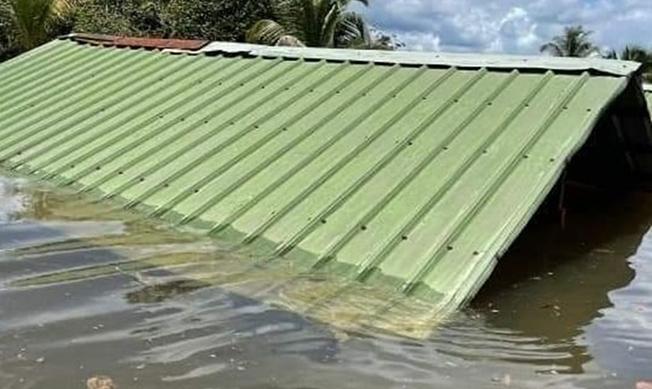Maroon Communities contribute little to climate change, but sometimes they are hit hard by its consequences. In March 2022, around 200 households in Brokopondo were affected by flooding. Schools, outpatient clinics and recreational centers were flooded up to the roof.
Villagers lost valuable possessions, entrepreneurs suffered enormous damage, students were deprived of education for weeks and with the destruction of agricultural plots, food supply became a problem, while the hygienic situation posed a danger to healthcare. The cause was climate change, which caused five times as much rain to fall during the dry season and the water in the lake became too much.

In addition to humanitarian aid, some households received compensation from Staatsolie in particular, but many are still waiting. Entrepreneurs and farmers have had nothing. Ronny Asabina, representative and captain of the village of Marshall Creek, says there is exclusion and discrimination. To prevent villages from flooding again in the future, Staatsolie implements conservative dam management, whereby water is now preventively drained so that there is sufficient storage capacity in the event of extreme rainfall. But it is not an absolute solution. Moving to higher areas is proposed, but the right facilities are still lacking, according to Asabina.

Staatsolie does have plans to relocate the people who built close to the river. This means building their homes on higher ground. Climate change has major consequences for these communities. Food security and incomes are at stake. Resilience is there, but the challenges are increasing rapidly.
This story was published by Starnieuws with the support of the Caribbean Climate Justice Journalism Fellowship, which is a joint venture between Climate Tracker and Open Society Foundations.